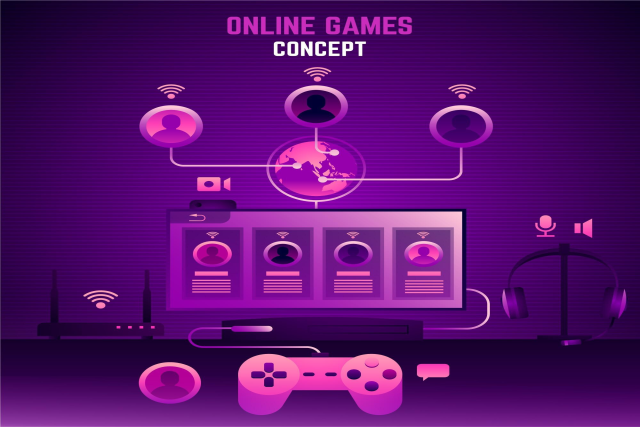
Cloud gaming has changed how we play video games entirely, allowing people to play and enjoy quality games from the cloud without having to buy expensive hardware. The strongest and most nimble cloud gaming infrastructure that fuels such platforms is the most important factor in making it all happen.
Getting an idea about the complex systems involved provides a better understanding of how cloud gaming has come so far to offer us the flexible and economical services that we can avail today.
Cloud Gaming Servers: The Backbone of Cloud Gaming
Central to cloud gaming servers is the principle of game streaming. In the usual gaming arrangement, gamers would execute games on local hardware (e.g., console or computer). With cloud gaming, the game runs on distant servers, and the video and sound are streamed to the user's device in real time. The server power and performance are what enable cloud gaming to happen.
Cloud gaming architecture
Providers of cloud gaming services, such as Google Stadia, NVIDIA GeForce Now, and Microsoft Xbox Cloud Gaming, invest heavily in cloud gaming servers to ensure that their users receive a top-tier experience. These servers handle everything from rendering game graphics to synchronizing inputs from players, ensuring that what happens on-screen is exactly in sync with the player’s actions.
The Client: The client is the player’s device, such as a smartphone, tablet, PC, or smart TV. The client receives the game’s video and audio streams and sends input commands (e.g., button presses or mouse movements) back to the server. The server runs the game’s code, accesses the game’s assets (such as textures and models), and produces the video and audio streams that are sent to the client. The server is equipped with high-performance CPUs, GPUs, and fast networking to handle these tasks in real time.
The Network: The network is the essential link that enables client-server communication. It handles the game's video and audio information from the server to the player device, as well as sending the player input information from the player device back to the server. A high-bandwidth, low-latency network is required in order to minimize the delay, as even a minimal lag can lower the quality of the gaming experience. The use of Content Delivery Networks (CDNs) is important for this purpose as it helps in fetching data from the nearest server to the player, which removes latency and enhances speed.
Cloud gaming architecture brings all these three parts coherently fall into place and enables users to enjoy smooth and immersive gaming experiences. The architecture is one of the key factors that make cloud gaming extremely effective since it provides flexibility for users to play games on nearly any device without considering the hardware demands of the game.
Gaming Data Center: Fuel Cloud Gaming Infrastructure
Cloud Gaming Success is very dependent on data centers used for games. Data centers are physical buildings where equipment - server, storage system and networking machine - make it possible to operate the flushing services. These data centers are also made with profits and error systems so that if one server fails, the other can be, the other may be. Games are used without disturbing the experience.
In order to reduce the delay and increase accountability, game data centers are located near large population hubs or internet exchange points. This ensures that the game data is capable of quickly and efficiently distributing players, including those in rural or remote areas. The fact is that data center players are required to reduce the backlog that is widespread with skyspills.
Cloud gaming infrastructure: scaling for demand
One of the most attractive things about skyspills is scalability based on demand. For traditional gaming hardware, developers and players must force hardware boundaries. But with a cloud infrastructure for games, that obstacle has gone. The CLOUD provider can increase or down resources based on demand, and this game allows developers to release games at low costs and release games without handling the physical server.
Technology behind cloud gaming
Cloud gaming infrastructure employs virtualization technology to enable dynamic resource allocation. When a game has an unexpected surge in players, extra server capacity can be added rapidly to accommodate the number of users. However, when players decline, resources can be curtailed in order to reduce costs. This flexibleness is among the major advantages of cloud gaming infrastructure since it enables gaming organizations to optimize their resources dependent on real-time requirements, thus ensuring cost-effective operation.
Furthermore, cloud infrastructure for games makes games available on a worldwide basis. It allows gamers to play from all over the world and have the same performance experience due to the massive data center network dispersed all over the world.






